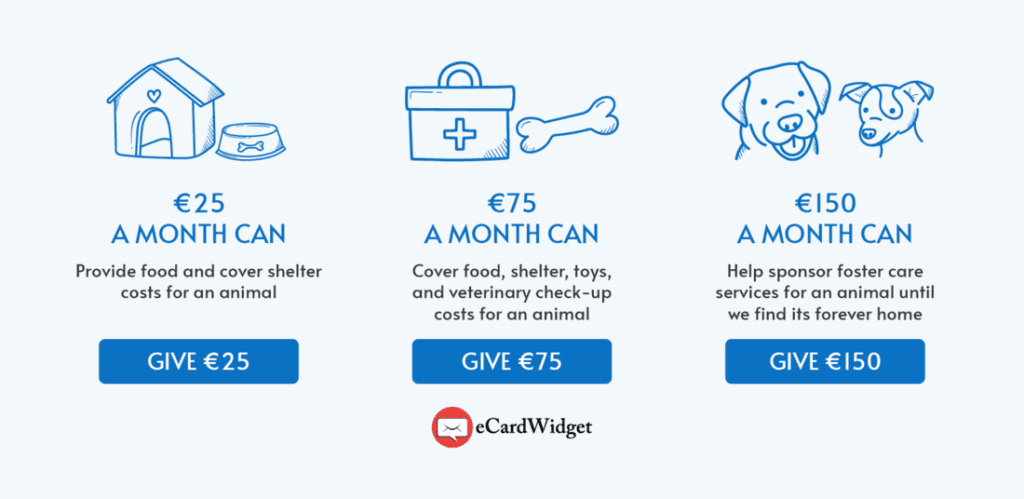
Written by Tim Badolato – CEO at eCardWidget
Tim Badolato is the CEO of eCardWidget.com an innovative platform for digital employee recognition, donor acknowledgment, business marketing, and nonprofit marketing. He has a passion for using technology to drive positive outcomes for mission-driven businesses and nonprofits.
If your fundraising appeals aren’t getting responses, chances are your message isn’t resonating with supporters. The right words can inspire action, turning passive readers into committed donors.
In today’s evolving fundraising landscape, donor expectations are shifting, competition for support is fierce, and economic pressures impact giving. Your message needs to work even harder to stand out. A compelling appeal doesn’t just explain why your cause matters; it forges a connection that makes donors feel invested in your mission.
We’ll show you how to craft appeals that resonate with your audience so your next ask gets the response it deserves.
Tell Stories That Spark Emotion.
People donate based on feelings. While facts inform, emotions inspire action. To produce emotions, aim to connect donations to real people. eCardWidget’s donor retention guide suggests telling donors about the communities they’re contributing to.
In direct appeals, tell individual beneficiaries’ stories. For instance, an animal shelter may share the story of a puppy that was rescued from an unsafe environment, malnourished, and scared. Thanks to donor support, he received urgent veterinary care, a warm place to sleep, and a loving foster home. After a few months of rehabilitation, he found his forever family.
Use donor-centric language to make the donor the hero of your story. For example, don’t say, “Our shelter has helped thousands of animals.” Instead, say, “Thanks to donors like you, thousands of animals have found safe and loving homes.”
This can also be as simple as assigning impact labels to donation amounts. These labels explain the direct impact beneficiaries receive from specific donations. For example, let’s say you work for an animal shelter. You might add these labels to your fundraising appeals:

- €25 a month provides food and shelter for an animal
- €75 a month provides food, shelter, toys, and veterinary check-ups for an animal
- €150 a month sponsors foster care services for an animal
By sharing impactful stories, you show donors the tangible results of their generosity and encourage them to form an emotional attachment to your cause. They don’t just give money; they change lives. Whether it’s a rescued puppy, a family receiving food assistance, or a student gaining access to education, powerful impact stories deepen emotional connections.
Make the Ask Clear, Direct, and Urgent.
Don’t assume donors know what you want them to do. Avoid vague requests and instead spell out their next steps.
End your fundraising appeals with a compelling call to action (CTA) that’s more specific than “Donate now!” For example, a stronger ask would be, “Give £25 today to provide a week’s worth of meals for a struggling family.” Or, for a fundraising auction item procurement letter, encourage businesses to give with CTAs like, “Please donate a gift certificate, gift basket, or local event tickets to raise funds for local families.”
Getting Attention’s copywriting guide suggests only issuing one CTA at a time. Otherwise, you’ll pull donors in multiple directions, resulting in them taking no action. The guide also encourages creating a sense of urgency, but do so without pressure. You could add a deadline by saying, “Our matching gift challenge ends tonight. Donate before midnight to double your donation’s impact,” or “Families need warm meals now—your donation makes a difference today.”
From here, place the CTA prominently in your appeal. In emails, add it toward the top and repeat it strategically throughout the message. For direct mail, make it stand out with bold text, colour, or a well-placed button-like graphic. On social media, keep it concise and follow platform-specific best practices. For instance, place CTAs within the first two lines of an Instagram or Facebook caption before the ‘See More’ cutoff. Use text overlays and verbal callouts early for video content like Instagram Reels or TikToks, then repeat the CTA in the caption.
No matter the format, your CTA should be easy to find and provide specific directions.
Show; Don’t Just Tell.
Featuring images and videos with your appeals will capture real emotions. A close-up of a child smiling after receiving a meal is far more powerful than a generic stock photo of food supplies. Show donors the real people they can help.
When using videos, follow these best practices:
- Keep it short and focused. Donors are more likely to watch your whole video if it’s concise.
- Feature real people. A personal testimonial is often more compelling than facts and figures alone.
- Add captions. Many people watch videos on mute or use assistive technology, so make sure they can follow along without sound.
Before-and-after visuals can also be powerful. A side-by-side image of an empty classroom and the same room filled with students with new school supplies makes your charity’s impact instantly clear.
Experiment With Different Platforms and Formats.
A fundraising appeal is only effective if it reaches the right audience. Meet donors where they are by distributing tailored appeals across multiple platforms. Multi-channel fundraising ensures your message is seen and engages different donor segments.
Experiment with these platforms:
- Email: Personalize subject lines, opening sentences, and donation asks based on donor history and preferences. Tell stories and inspire urgency to drive action.
- Text Messaging: Keep messages short and direct. Use compelling language that encourages immediate donations and follow up with updates.
- Direct Mail: Share emotional stories and visuals that evoke a personal connection. Include a QR code or direct link to an online donation page to make giving easy.
- Social Media: Share impact stories, livestream fundraising events, and leverage user-generated content to create an emotional connection. Launch peer-to-peer fundraisers to expand your reach.
- Advertising: Use targeted digital ads to amplify your appeal. Retarget users who previously visited your donation or event page but didn’t convert.
Choose platforms based on where donors are active. Check their preferred communication channels. For major donors in particular, send personalised email appeals or schedule one-on-one phone calls to form unique, long-lasting relationships.
Monitor your fundraising appeals’ performance across platforms, too. If a channel isn’t driving donations, experiment with different messaging formats or timing to improve engagement.
eCards: A Creative Format to Strengthen Engagement
Stand out in donors’ inboxes by formatting appeals as digital greeting cards. eCards offer a unique way to enhance fundraising appeals by adding an interactive touch. Experiment with these strategies:
- Sell eCards as digital gifts for special occasions, including birthdays and major holidays like Valentine’s Day or Mother’s Day.
- Incorporate them into the tribute donation process, allowing donors to send an eCard when giving in someone’s honour (e.g., “Donate £20 and send an eCard to a loved one letting them know you made a gift in their name.”).
- Use them in peer-to-peer fundraising, empowering supporters to share eCards that promote your mission and encourage others to give.
Check out these eCards from the Seattle Humane Society, which pair fun messages with photos of their rescued animals:

Integrating eCards into your fundraising efforts creates a memorable, donor-centric experience that strengthens engagement, cultivates relationships, and drives donations. Choose a platform that allows donors to send eCards via email, text, or social media to maximise impact.
Even after you’ve sent or posted your fundraising appeals, your work’s not done yet. Follow up to thank donors who gave or remind those who haven’t yet. Continuing the conversation keeps donors engaged in your work and primes them to give again.
Your words can turn interest into impact. Start crafting your appeals and inspiring supporters to give.






